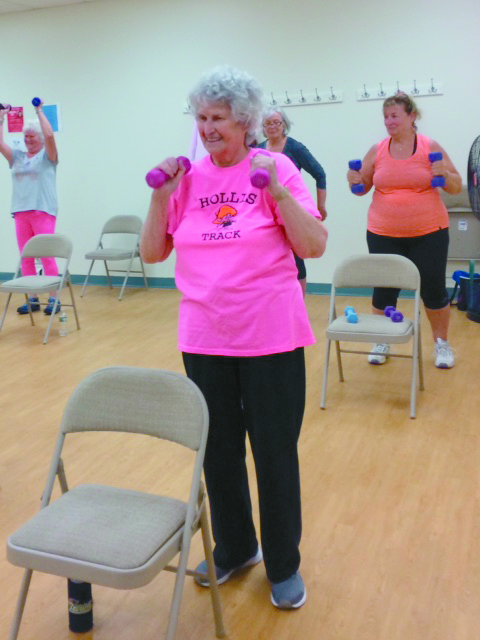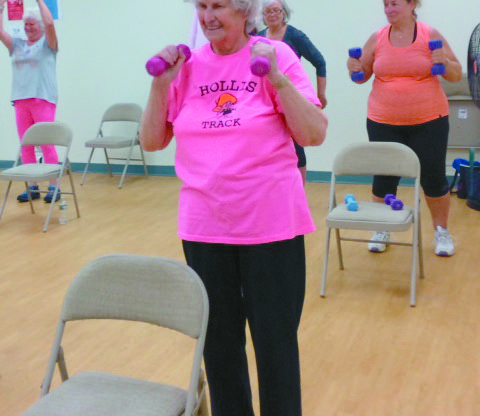I am closing in on 50. AARP is knocking on my door and with this milestone in my near future, I’m also well aware of the hard work that is ahead of me to stay in shape, both physically and mentally. I think about the coming years and what it will take to be a healthy senior.
I talk to my dad at least twice a week, and I am always inspired by him. Our conversations always include what he has done for workouts that week. He will be turning 76 in July and each day he does some kind of physical activity—whether it’s golf, walking, lifting weights or playing pickle ball. He jokes that he exercises to “stick around” for his family but he takes it very seriously and rarely misses the opportunity.
There are many benefits for seniors who exercise. Dawn Stevens, a local fitness instructor with the Gorham Recreation Department, shared that the most important benefit of exercise is the increase in cardiovascular strength, which in turn reduces the chances of heart disease. Stevens said, “Exercise can reduce blood pressure, helps maintain healthy bones, muscles and joints, aids in flexibility and range of motion, and helps in preventing falls.” Studies have also shown exercise reduces the risk for dementia.
Before you begin any exercise regimen, it is always recommended to check with your physician, especially if you have a chronic health condition, previous or current injuries and/or balance issues. Stevens suggests that you always introduce yourself to a new class instructor and let them know your limitations. “They are there to help you get the most out of the workout that is right for you,” she said.
Donna Kennie is one of Stevens’ clients. She attends classes at the Gorham Rec five days a week. Kennie said she began working out over 40 years ago, however, recently her doctor suggested she incorporate weight bearing exercises for her osteoporosis. She incorporates many different exercises into her routine each week including hand weights and resistant bands, cardio, balance work, lunges and squats. Kennie suggests dropping in on a class to observe and participate if you choose.

Donna Kennie takes part in a weekly exercise class through the Gorham Rec Dept.
Stevens said the best types of exercises for seniors differs for everyone, but first and foremost, she stressed, you must enjoy it. Chances are, if it isn’t enjoyable, you won’t stick with it. You should then ask yourself what you want and need from a workout. Stevens said, “In most older adults, the main concern is maintaining quality of life outside of a gym. To do this, focus on workouts that build strength, help improve balance, and choose movements that mimic everyday movements.”
Seniors should know their limitations when beginning exercise programs. For example: Are your bones strong enough for high impact exercises like running and jumping? If not, low impact classes are best. If you’re struggling with balance, biking might not be a good choice as you will want to avoid exercises that could cause falls. No matter your limitations, Kennie said, “The instructors can modify any exercises that are too difficult to do.”
Each individual should assess his/her physical abilities when deciding how often to exercise. Stevens said, “Studies show that all adults including seniors can benefit from 15 minutes of moderate heart pumping activity daily, 30 minutes is best.” She also said strength training exercises are recommended two to four times a week in addition to stretching exercises to help maintain flexibility and balance and remain injury free.
Exercising can help you sleep better, and for some, it reduces the symptoms of anxiety and depression. For Kennie, exercise has been good for weight control, strengthening bones and muscles, increasing stamina, improving overall fitness, but more importantly, it increases life expectancy. It adds many things to your health and well being, most of all, exercise makes you happy.


